Pacifica Blends Assets of Minivan and SUV
By John Gilbert
LAGUNA BEACH, Ca.—What would happen, I hear you ask, if all the slick new styling, interior features and attractions of SUVs and CUVs were combined with the family-friendly spaciousness and efficiency of a contemporary minivan, in one all-new vehicle? The result would be the 2017 Chrysler Pacifica — a brilliantly designed and finished family transportation module that could recapture the popularity once enjoyed by minivans.
A lot of the changes are subtle, and from a distance the Pacifica certainly looks like a minivan. But make no mistake: The Pacifica is entirely new, from its platform on up to its panoramic sunroof, and from its sleekly aerodynamic nose to its bob-tailed magnesium and aluminum liftgate. More than that, it drives brand new — more like a sports sedan than a soccer-mom-mobile, while pampering its occupants in quiet luxury.
The minivan as a U.S. automotive craze apparently ran its course in the three decades since.the sibling Dodge Caravan and Chrysler Town & Country created, expanded, and then dominated the segment that once sold about a million units per year. That number has dropped by about 50 percent as consumers become more and more infatuated with sports utility vehicles and now CUVs. But a half-million potential sales are still a lucrative target, and demographics indicating more kids are on the way might foretell a comeback for a vehicle that never really went away.
Chrysler has kept its minivan duo current, but time has come to revise the Caravan and Town & Country, so FCA — Fiat-Chrysler Automotives — decided to go all out and create an entirely new entity. That meant a new name, too, so FCA decided to reclaim its old Pacifica monicker for the vehicle that will relieve the Caravan and Town & Country of their duties as savior and mainstay of the corporation.
Minivans displaced station wagons about three decades ago as the most efficient and rational family hauler, but when they got so popular as to be commonplace, they were displaced by SUVs, which, in turn, currently are in the process of being displaced by CUVs — Compact Utility Vehicles. For some unknown reason, minivans became the vehicle that was needed, but unloved by modern buyers. Nobody wanted to boast about their minivan.
The Pacifica has a sleek attractiveness that neither minivan nor SUV has ever dreamed of, with contoured lines coming off a steeply-sloping nose, and sweeping rearward to collect themselves around a new-signature upsweep at the rear of the rearward side window, not unlike BMW’s famous rear pillar kink.
With twice the rigidity, road manners are very quiet, but with excellent road-holding dynamics. The streamlined look and the forms that flow around the vehicle in 3-dimensional contours are best defined by the 0.30 coefficient of drag.
“The grooves on the front end give a strong attitude that conveys confidence,” said chief designer Brandon Faurote, who grew up and went to high school in Winona, Minnesota. “The bright underline of the grille comes up to the outer top of the headlights. We were able to lower the occupants position in the vehicle. We wanted to create something with a strong presence that would be distinctive. The side glass tapers in, and the windshield is sloped more, helping us get a very slick aerodynamic number.
“The lower character line and the upward kick of the rear windows is a nice signature element and gives an unexpected look for a minivan. We’ve also gone from vertical to horizontal for the taillights for a more horizontal look. It’s very dramatic on the road, and emotional, which is very appealing to a driver.”
Chrysler Corporation’s Dodge Caravan was immediately dominant three decades ago, and later joined by the upscale Chrysler Town & Country, the tandem easily fought off all challengers from Ford and General Motors, and more recently faced increasing competition from the Honda Odyssey, Toyota Sienna, and Kia Sedona.
Faurote advanced the whole concept of a minivans with his exterior design, joining interior designer Chris Benjamin and chief engineer Mike Downey for a blend of ideas to make the Pacifica a complete package.
“The center structure has been strengthened for twice the torsional stiffness,” said Downey. “We previously had to compromise on our steering and suspension, but having the all-new platform meant we could change the architecture to improve steering, ride and handling.
“The sliding side doors are all aluminum, which saves 40 pounds, and they can be opened and closed hand’s-free. We use a magnesium insert and aluminum outer skin on the liftgate to save another 20 pounds. Altogether, we’ve saved 250 pounds. We also re-engineered the Stow ’n Go seats. The second seats tilt for easy access to the third row, and child seats can remain in place.”
The foldable second and third row seats disappear into below-floor cubicles to leave a large, flat floor. Stow ’n go is a Chrysler original, one of 78 firsts the company claims for its minivans over the years. The Pacifica adds 37 more new features. Sliding your foot under the sliding door or liftgate to activate them while your arms are full, may be traceable to the Ford Escape’s liftback, but it is new to minivans.
Also, Honda puts a handy on-board vacuum cleaner in the Odyssey, and the Pacifica does the same. “We have 14 feet of hose on our Stow ‘n Vac, and an extension gives you another 14 feet,” said Downey. “If you can’t do it first, do it best.”
Pricing separates the various models, starting with the L at $29,590. The Touring starts at $31,490, and Touring-L at $35,490, the Touring-L Plus at $38,890, and the Limited at $43,490.
The option bin is too tempting, but in basic form, the Pacifica offers plenty. The more potent Pentastar 3.6-liter V6 has 287 horsepower and 262 foot-pounds of torque, more than enough to hurl the Pacifica onward and upward. Its power to the front wheels is regulated by a rotating shift knob on the left side of the center stack, to mind the 9-speed TorqueFlite automatic transmission. The Pacifica responds swiftly and smoothly, but still attains an estimated 28 miles per gallon.
Inside, the optional plush leather seats, colors and materials were selected for artistic harmony, rather than just as an accumulation of luxury stuff. “We wanted to make the chaos less chaotic, to make it work for people,” said interior designer Benjamin. “The horizontal flow of the dashboard and the proportions of the instrument panel create a feeling of space. Every angle is soft to the touch, and we use colors and materials for contrasts.”
Larger knobs operate the radio volume and tuning, and the rotary shifter leaves extra room where the shift level would ordinarily have to be. The navigation screen is 5-inch in base form or 8.4-inch in optional size, and is bonded flush to the surface glass precisely. The huge, panoramic sunroof lets light shine in on up to eight occupants in all three rows.
Along with all the latest connectivity features, the Pacifica is loaded with safety technology. A 360-degree surround camera with bird’s-eye view of all surrounding objects is complemented by a park sensing ultrasonic devise to help guide drivers into parallel or perpendicular parking spots. Adaptive cruise control maintains distance behind cars on the highway, and can also bring the Pacifica to a controlled stop if necessary to avoid a collision. Collision warning- plus alerts the driver before assisting on stopping. Lane departure warning borrows information from the power steering and uses torque input to correct if the vehicle seems to wander out of its lane.
With navigation and function screens, there is also an available 7-inch secondary driver display that can be programmed to contain personal information. A mobile phone app can allow vehicle owners to start the vehicle or to lock or unlock doors, honk the horn or flash the lights from anywhere.
You can also add on-demand Wi-Fi hotspot subscriptions. For backseat riders, there are 10-inch video screens in the backs of the front headrests and a rear ceiling screen for viewing videos or playing games for rearward occupants.
The Pacifica can become anything you want it to be, from an office on wheels, to a comfortable family traveling lounge, without intruding on the pleasure of driving, which combines the feel of a luxury sedan, the handling of a sports sedan, and the standard active noise cancellation of a bank vault, to eliminate virtually all outside noises from entering the interior. That enhances whichever potent audio system you choose.
As you carve perfect trajectories around mountain roadways, you forget you’re driving a minivan, because really, you’re not. Farewell, Caravan and Town & Country; long live Pacifica.


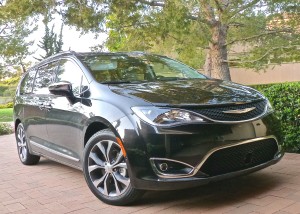

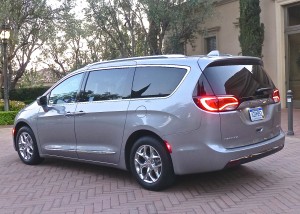
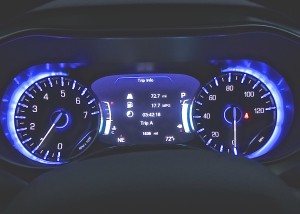
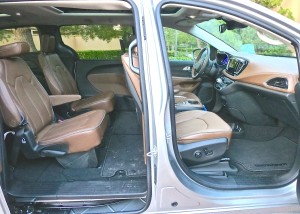
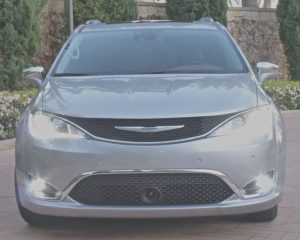
 John Gilbert is a lifetime Minnesotan and career journalist, specializing in cars and sports during and since spending 30 years at the Minneapolis Tribune, now the Star Tribune. More recently, he has continued translating the high-tech world of autos and sharing his passionate insights as a freelance writer/photographer/broadcaster. A member of the prestigious North American Car and Truck of the Year jury since 1993. John can be heard Monday-Friday from 9-11am on 610 KDAL(www.kdal610.com) on the "John Gilbert Show," and writes a column in the Duluth Reader.
John Gilbert is a lifetime Minnesotan and career journalist, specializing in cars and sports during and since spending 30 years at the Minneapolis Tribune, now the Star Tribune. More recently, he has continued translating the high-tech world of autos and sharing his passionate insights as a freelance writer/photographer/broadcaster. A member of the prestigious North American Car and Truck of the Year jury since 1993. John can be heard Monday-Friday from 9-11am on 610 KDAL(www.kdal610.com) on the "John Gilbert Show," and writes a column in the Duluth Reader.